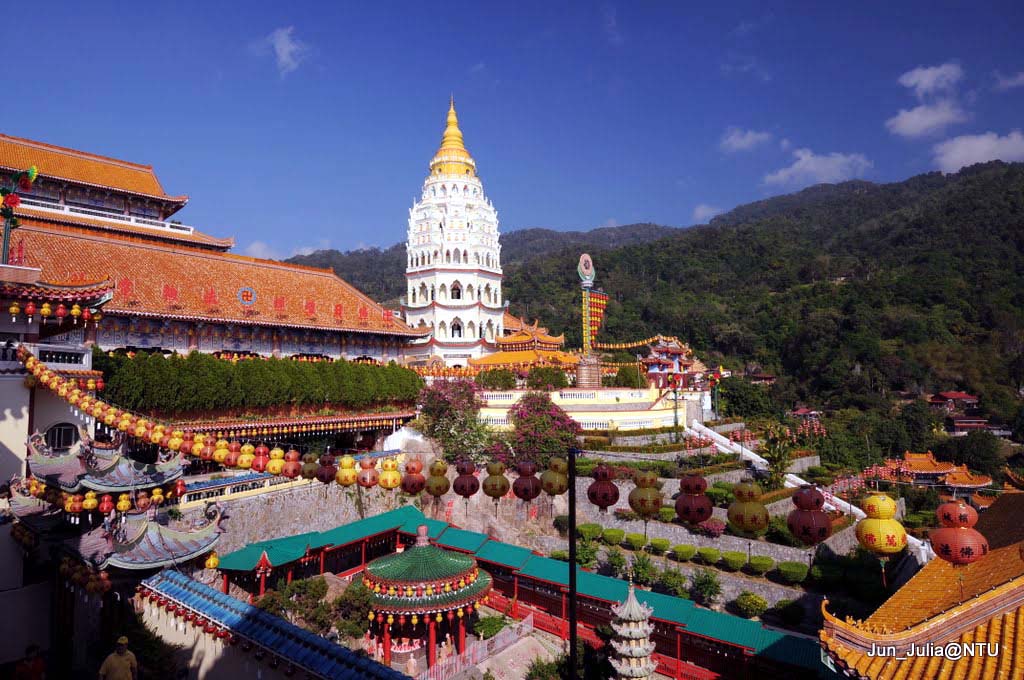BRIDGE PULAU PINANG


Known as Foreigner's Rock in local language, Batu Ferringhi is a beach township, occupying a stretch of beach at north of Penang. It may be a bit calm if you pass by during the day but as night approaches, Batu Ferringhi comes alive! Night Market or some refer as 'Sidewalk Bazaar' or 'Street Bazaar' is one of the most popular activities at Batu Ferringhi.
 Small alley on street pavement
Small alley on street pavement By the main road in Batu Ferringghi
By the main road in Batu FerringghiDespite the narrow main road along Batu Ferringhi, local traders diligently put up their stalls along the pavement everyday as long as it is not raining. They operate right after sunset, as early as 6pm until past midnight. If you are coming from Tanjung Bungah, the string of stalls stretches from Rasa Sayang Resort and all the way to Casuarina Hotel – a distance of more than 1 km.
 The Ship Restaurant serves Western
The Ship Restaurant serves Western A Middle Eastern Restaurant
A Middle Eastern RestaurantAnd shopping is a favorite night life at Batu Ferringhi! During the day, beach is the main attraction and as night crawls in, street bazaar is where the folks flock! Lighted landmarks, colorful neon from hotels, cafes, restaurants and pubs has face lifted Batu Ferringhi and it is lively!

 Of various colors, shapes and sizes
Of various colors, shapes and sizesThe bazaar stalls along the beach side of the road features an assortment of goods ranging from souvenirs, woman’s accessories, luggage, sandal, local food, shawl/scarf, 'designer' handbag, 'branded' apparels and even DVD. Claimed by some locals as one of the best places in Penang for souvenirs with ample choices. The merchandises are selling at very reasonable price (in fact, same price is offered to both local and tourist) and attracts a huge crowd to the Night Market which was literally translated from Malaysian language 'Pasar Malam'. Take a walk along to this stretch of canopy stalls and compare the quality or price if you wish.
 Beautiful dresses for ladies
Beautiful dresses for ladies Children's wear too!
Children's wear too!















 Ain Arabia
Ain Arabia Central Market Kuala Lumpur
Central Market Kuala Lumpur Cosmos Theme Park
Cosmos Theme Park Desa Waterpark
Desa Waterpark Jade Museum
Jade Museum Jalan Tuanku Abdul Rahman
Jalan Tuanku Abdul Rahman Little India Brickfields
Little India Brickfields Malay House
Malay House Masjid Jamek Kuala Lumpur
Masjid Jamek Kuala Lumpur Merdeka Square
Merdeka Square National Art Gallery
National Art Gallery National Monument
National Monument National Textile Museum
National Textile Museum National Theatre
National Theatre Petaling Street
Petaling Street Petronas Philharmonic Hall
Petronas Philharmonic Hall P.Ramlee Memorial Museum
P.Ramlee Memorial Museum Royal Selangor Club
Royal Selangor Club Sri Maha Sakthi Mohambigai Amman Temple
Sri Maha Sakthi Mohambigai Amman Temple Sultan Abdul Samad Building
Sultan Abdul Samad Building Titwangsa Lake Gardens
Titwangsa Lake Gardens National Zoo
National Zoo  Ampang
Ampang Putra World Trade Centre
Putra World Trade Centre Kuala Lumpur Tower
Kuala Lumpur Tower Bukit Bintang
Bukit Bintang

